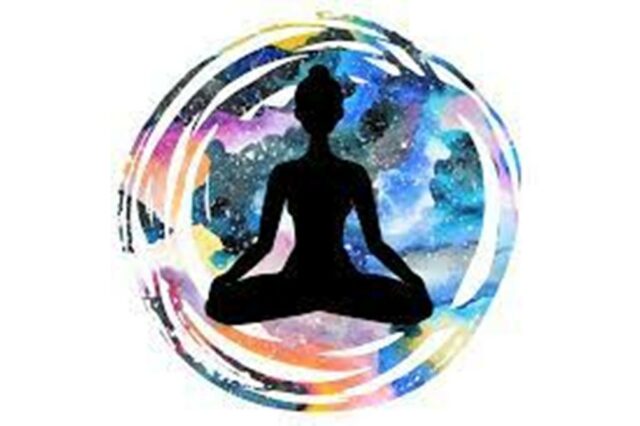Religion regresses while spirituality grows. This is a phenomenon that the social sciences had not anticipated and that the surveys reflect: 48.1% of the adult population identifies as a “spiritual person” without being linked to a religious tradition; they simply recognize it as a form of transcendent subjectivity detached from classical institutional structures. The impulse of spirituality has been something unexpected.
The percentage of people who declare themselves religious in Catalonia has decreased steadily in recent decades, and this does not seem to have a brake. But the same does not happen with spirituality: people who feel identified with it grow. It is not a phenomenon exclusive to Catalonia, since a recent survey showed that something similar is also taking place in the United States; that is, the percentage of people who identify with religion is decreasing significantly, year after year, while the number of those who are inclined towards spirituality.
The social sciences had not foreseen this drift. The theory of secularization predicted that modernity implied, inevitably and irreversibly, the end of religion; it was stated that the bankruptcy of traditional religious confessions would result in the increase of atheism. The impulse that spirituality has taken as a movement, and as a category of identification, has been something unexpected.
Moreover, decades ago, it was almost inconceivable to think of spirituality outside of religious traditions, because spirituality and religion were two sides of the same coin. Spirituality was recognized as belonging to, or developing within, a religious tradition. But it may not be today or,at least,not always.
Being spiritual but not religious?
According to the Barómetresobre la religiositati la gestió de la sevadiversitat (Generalitat de Catalunya, 2020), 48.1% of the adult population identifies as a “spiritual person”. A somewhat more precise analysis in this regard reveals some interesting elements, such as the fact that a majority identifies as spiritual but not religious (59.4%). The consideration of spiritual, therefore, does not always imply the link with a religious tradition, but rather emerges as a form of transcendent subjectivity unrelated to classical institutional structures.
However, on the other hand, there is a significant percentage of the population that continues to declare itself both religious and spiritual at the same time, and that does not live with both issues incompatible. It is spirituality that is cultivated in relation, and in communion, with belonging to a religious tradition. There are those who conceive spirituality as religion in its purest form, without the institutional contamination that reproduces the vices and evils of a corrupt society.
If we look at those who define themselves as “non-spiritual”, it is clear that they are not a homogeneous group either. There is 33.6% who say that they are neither spiritual nor religious, and these are the profile that best fits the label of atheism, which is growing slowly but steadily. However, 13.8% of the population states that they do not consider themselves spiritual but rather religious. At first sight, this data could seem paradoxical.
Is it possible to be religious without being spiritual? Can one be a member of a religious denomination without practicing their spirituality? In our society there are more and more people who believe so, and this is a growing trend in Europe. There is talk of processes of acculturation of religion, in which the link with religiosity is built through identification with the cultural community, with its history, and not so much with spirituality or religious orthodoxy.
The French sociologist Hervieu-Léger coined the concept “belonging without believing” to characterize this phenomenon; that is to say, that of people who say they are Christian, Muslim or Jewish, but who rarely set foot in a religious temple or observe religious precepts.
So what do we talk about when we refer to spirituality?
In the midst of this transformation scenario, it is difficult to see what exactly we mean when we speak of spirituality. The question is not trivial, nor does it have an easy answer.
There are those who conceive spirituality as the “good” side of religion, what remains after the shipwreck; religion stripped of the institution, of the dogmas, of the hierarchies. Religion is, in its purest form, a behavior without the institutional contamination that reproduces the vices and evils of a corrupt society. This definition may be attractive at first sight and offers us clues to think about spirituality, but sociologically it is not very consistent.
Spirituality is the daughter of its time; it is not a “pure” form that develops outside the economic, social, cultural and political context in which it finds itself. Understanding the emergence of spirituality as a category also forces us to understand the historical and social context that has made it possible. The individual feels legitimated to articulate their own spiritual narrative and to seek, explore and choose between different forms, and various techniques, of searching for transcendence.
A broad historical perspective, such as that developed by the Canadian philosopher Charles Taylor, allows us to trace the origins of the growth of spirituality in contemporary society. In his work The Secular Era (Gedisa, 2015), Taylor exposes the process by which the individual becomes disassociated from the gods and from the need for an external authority referent. The expansion of science is a key issue in this scenario.
The human being, and no longer God, then becomes the measure of all things; the individual gains autonomy, and the search for transcendence and meaning acquires prominence. The truth is no longer located outside the individual and it is the subjective self that becomes the compass of this emerging spirituality. From this macro-historical perspective, the growth of spirituality is linked to the advent of the secular era and the rise of the modern autonomous subject.
Another sociologist, Peter Berger, gives us more clues to understand the phenomenon of spirituality. Berger affirms that, in contemporary times, religious institutions have lost plausibility: we no longer take their existence for granted, nor do we feel the obligation to link to them. The individual can decide to join a religious community, a confession, but he can also decide not to. And it is in this gesture, in the possibility of deciding, in the need to decide, where the seed of secularization lies.
It is also in this context that the possibility of a spirituality detached from traditional institutions is born. The individual feels legitimized to articulate his own spiritual narrative and to search, explore and choose between different forms, and various techniques, of searching for transcendence. The repertoire is wide, and the processes of globalization have only accentuated the availability of spiritual messages, techniques and symbols available to all of us.

Now, recognizing that the individual gains autonomy to build his spiritual life, to seek the transcendent meaning of his existence, should not plunge us into the mirage of spirituality free of social, cultural, political or economic influences and, at the same time, emancipated from all forms of authority. On the contrary, the emergence and expansion of spirituality evolve in dialogue with the social, economic, cultural and political transformations that occur in our society.
From counterculture to mindfulness: The role of spirituality in a neoliberal context
British sociologist Linda Woodhead places the beginning of the expansion of spirituality unrelated to traditional religions in the 1970s. She tells us that it is through countercultural movements and Western openness to Eastern religions that spirituality begins to gain strength in Europe and the United States. Initially it is a spirituality that is conveyed through small and scattered heterogeneous communities, from alternative therapy centers to hippie communities or groups of pagan spirituality. Linda Woodhead calls it “holistic spirituality” in an effort to emphasize the articulated view of body, mind, and spirit that it generally advocates. At the beginning, it is a form of spirituality that grows outside the official religion and is especially popular in urban areas and among middle-class women.
At the beginning of the 21st century, spirituality loses its countercultural character and acquires visibility in the public space. According to Eva Illouz, the growing centrality of emotional health and the demand for personal fulfillment give it a boost.
Sociologists Galen Watts and Dick Houtman point out that, despite the heterogeneity of this emerging spirituality, we can distinguish 3 characteristics that run through most of its expressions. They are a religious ontology of immanence, based on the idea of the sacred as an impersonal and ever-present experience; an epistemology of experience that gives personal experience, the sensory world, pre-eminence by reaching transcendence; and the idea of salvation through contact with the “authentic self”, an inner self that is the custodian of ancient wisdom. These beliefs, they will tell us, are linked and dialogue with different philosophical and spiritual traditions, and crystallize in specific spiritual practices that range from reiki to shamanic rituals, Christian meditation or family constellations, to name just a few.
Starting from the beginning of the 21st century, this spirituality takes a new impetus and gains popularity. It loses its countercultural character and acquires visibility in the public space. The rise of what the sociologist Eva Illouz calls “therapeutic ethos”, that is, the growing centrality of emotional health and the demand for personal fulfillment give it impetus. Spirituality becomes a resource available to the individual to build their identity and to manage uncertainty in the risk society. Self-help literature, yoga retreats or mindfulness courses are some of the best known examples of this spirituality in search of emotional well-being.
There are many who consider that this form of spirituality enhances the docile adaptation to an increasingly ferocious neoliberalism, and facilitates the construction of subjects willing to resign themselves to the demands of the context; it is surely true, but it is not inevitable.
The German sociologist Hartmut Rosa says that what characterizes our society is the acceleration in which we find ourselves immersed. An acceleration that is expressed both externally, with the constriction of time in contemporary society, as well as with an internal dimension, with the internalization of time pressure. Experiences of transcendence gain relevance, according to Rosa, because they become a way of momentarily stopping time, of taming the need for acceleration and transcending everyday life. Spiritual experiences can be pauses, a full stop, a way to gather strength to continue in this demanding world. But they can also be the beginning of a deeper long-lasting transformation that leaves its mark.
Be that as it may, and beyond the moral verdict that we want to give to this new spirituality, what is indisputable from the sociological point of view is that today we cannot define spirituality in the singular. It is, rather, a plural matrix configured from different philosophical narratives, spiritual techniques and experiences of transcendence that individuals combine in different ways, according to their specific needs and also their cultural and social capital.


